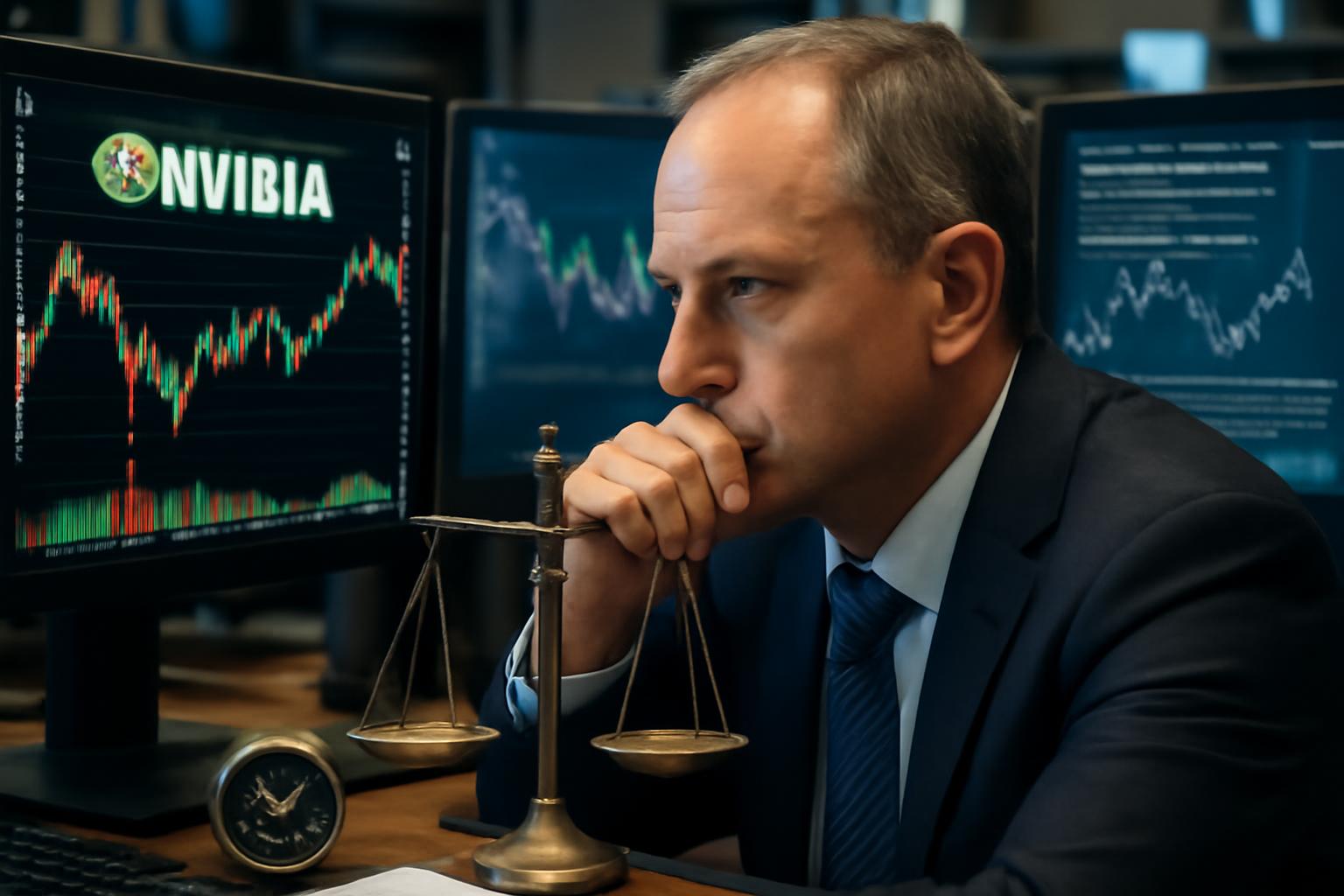The pulse of the markets wells up from a chorus of near-term events and policy signals rather than from any single revelation. Investors are treading water ahead of Nvidia’s earnings, anxious about the texture of monetary policy in the United States after a political move that unsettled confidence in the independence of the Federal Reserve. In Europe the DAX looks to edge higher on external steadiness, but remains trapped within a band defined by stubborn resistance and the slower march of the moving averages. Across the Atlantic, the modest lift in equities is framed by relief that the question of Fed independence has not sparked a wider storm, even as the clock ticks toward Nvidia’s numbers after the close. In Asia, sentiment is cautiously constructive as traders await results, even as data from China softens the backdrop. The greenback has firmed against the yen, the Swiss franc and the euro, reflecting shifting expectations about policy and inflation. Commodities lie largely flat as markets scan for new triggers, including possible US tariffs on Indian imports. And amid all this, Rheinmetall draws attention in the German market for a new artillery ammunition plant, while Apple schedules its autumn spectacle—an event that will test how far artificial intelligence threads can be woven into consumer devices and how fiercely the race for platform and feature supremacy is run.
A marketplace that moves on headlines and hedge-fund bravado already speaks as if it were a single organism, but I would remind the reader that the true currency of a complex economy is not the instantaneous reaction to a corporate earnings beat or a tariff rumor, but the price system that emerges from countless dispersed judgments. Money, in its role as a messenger of scarcity and value, must remain a constraint rather than a tool of politics. If the Fed’s independence is hobbled by a cascade of political signals, the long-run incentive to save and invest—foundations for a genuinely prosperous order—are endangered. The fear is not simply fear of inflation or deflation; it is the fear that the monetary framework will bow to the latest grievance or the loudest lobby, rather than chasing a stable horizon where prices inform producers and consumers without the sticky interference of political wind.
Tariffs on imports from India, if pursued, would be another instance of coercive tailoring of the price system. When governments attempt to sculpt international specialization through tariffs, they disrupt the very spontaneous order that emerges when millions decide where to allocate labor, capital, and risk. The market’s noise is not a nuisance to be silenced; it is the signal, however noisy, that reveals hidden knowledge about costs, preferences, and technologies. In that sense, the market’s current mood—nervous yet hopeful, cautious yet curious—reveals a healthy instinct for adaptation, so long as policy remains tethered to rules and predictable procedures rather than episodic interventions.
Nvidia, Apple, Rheinmetall—these are not merely corporate headlines; they are embodiments of the tension between invention and intervention, between decentralized discovery and centralized direction. Nvidia’s surge toward uncharted profitability signals the strength of entrepreneurial experimentation in semiconductors and AI, a field where the dispersed know-how of engineers, managers, and customers outstrips any central planner’s attempt to forecast the next breakthrough. Apple’s autumn pageant will reveal how far a firm can blend consumer desirability with the scarcely tath progress of artificial intelligence within a platform ecosystem, and whether the market will reward firms that innovate on the edges of policy and consumer demand. Rheinmetall’s plant signals a state-of-the-art defense-industrial pairing that raises questions about governance, procurement, and the proper scope of public investment in national security. In all these cases, the price system—the slow, stubborn, sometimes maddening process by which resources are allocated in light of innumerable, tacit pieces of information—remains the best instrument we have for uncovering the truth about value and possibility.
Let us therefore resist the temptation to treat market ebbs as merely the echoes of short-term policy rhetoric. Let us instead regard them as the tremors of a system attempting to coordinate knowledge that no single mind could ever possess. A robust monetary order, protected from the day-to-day whims of political weather, and a framework of transparent, predictable rules that guide trade and investment, are not relics of a bygone era but prerequisites for sustained innovation and growth. In that sense, the current swirl of earnings previews, policy tensions, and strategic plant openings is not merely background noise; it is the lived test of whether a society trusts the price system to do its work when confronted with the messiness of the modern world.
